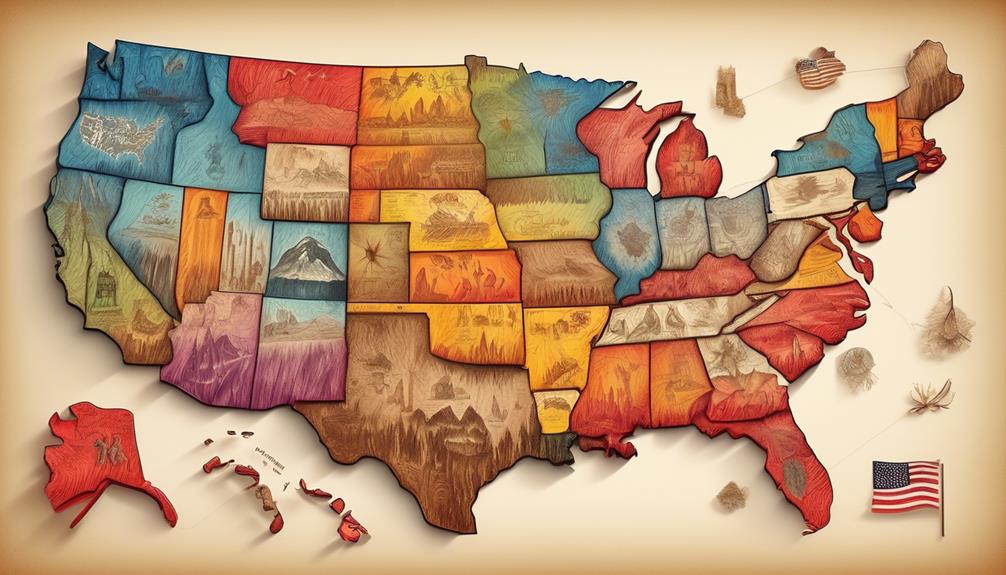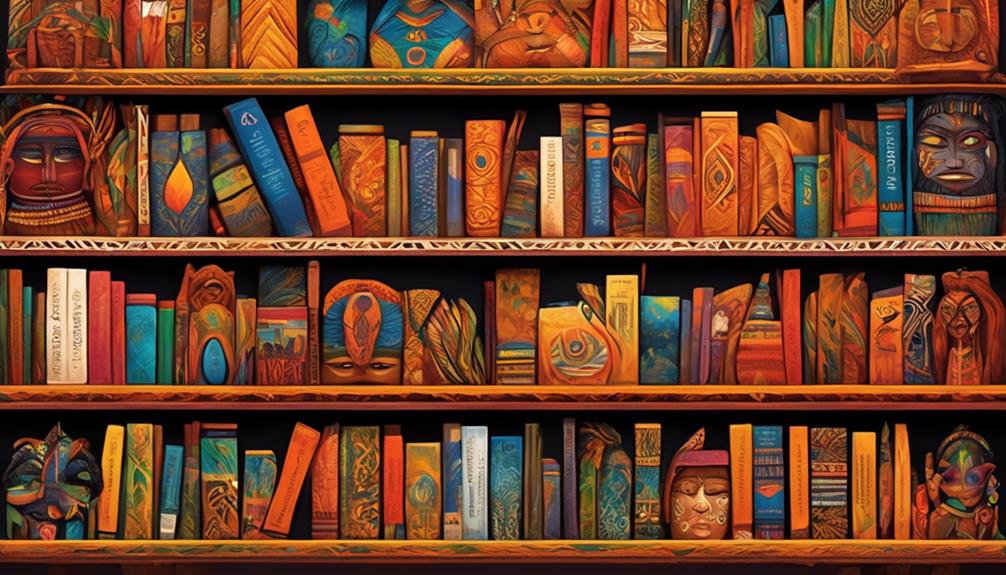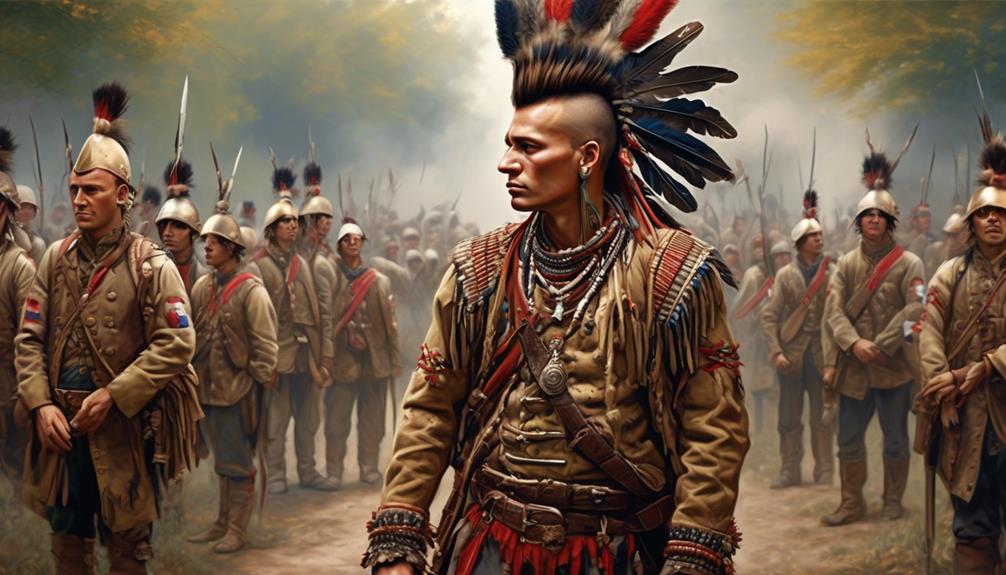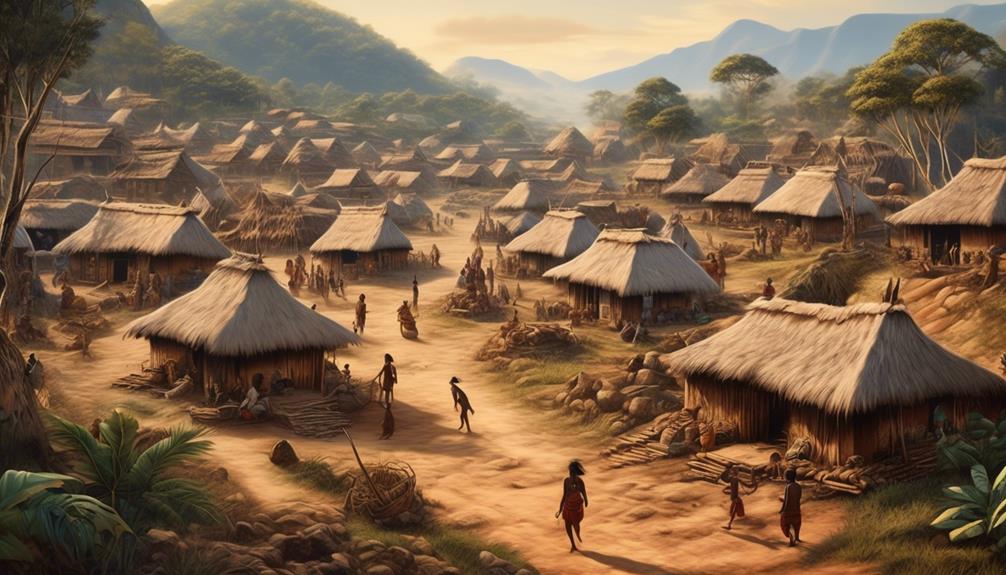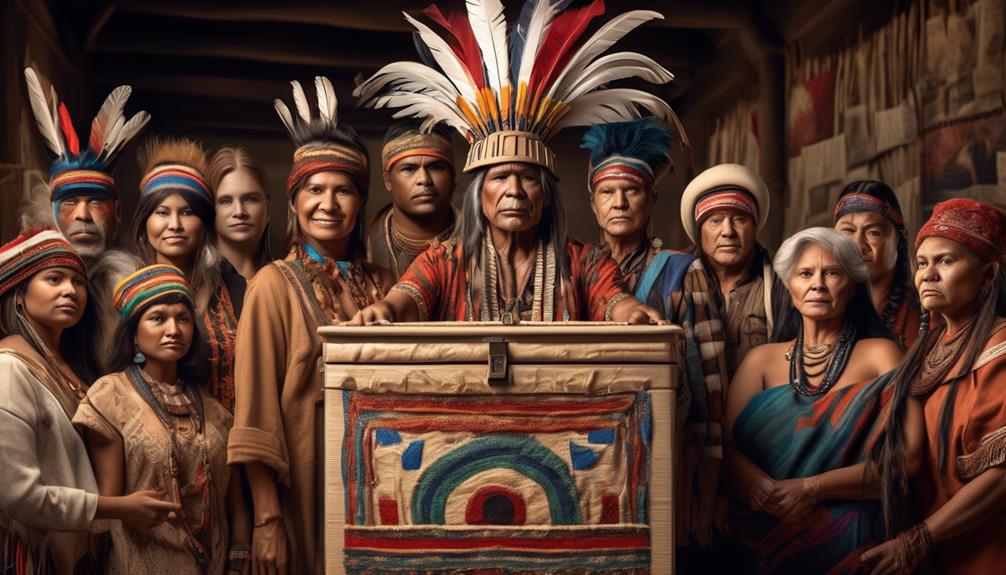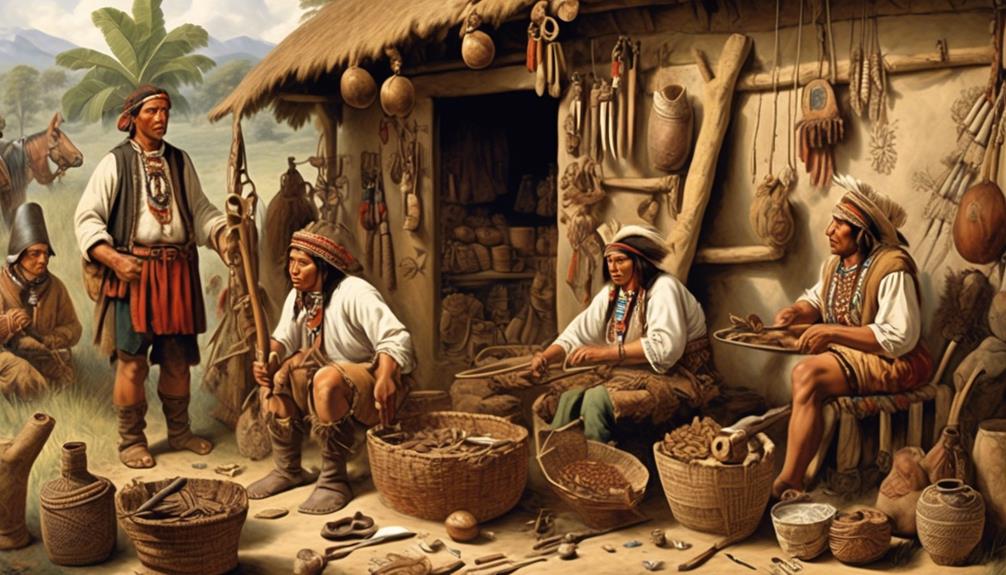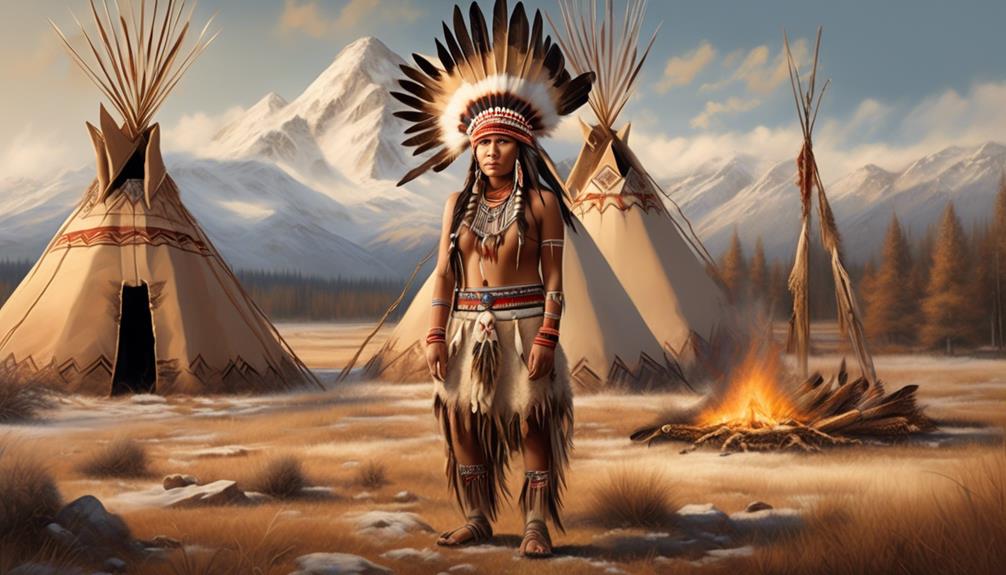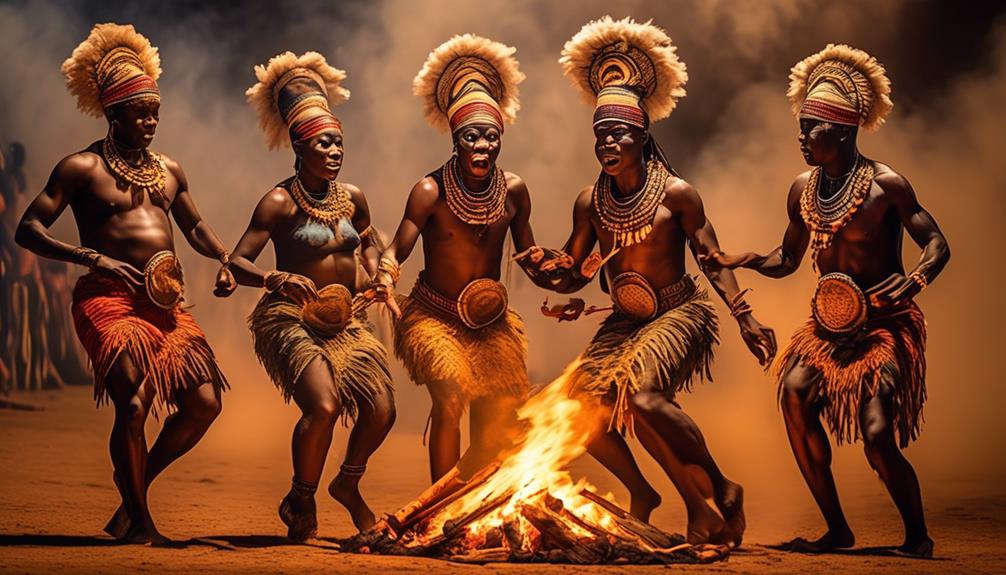As of 2021, over 15 states across the United States have formally embraced Indigenous Peoples Day, either instead of or alongside Columbus Day. This shift in celebration from Columbus to honoring Indigenous Peoples reflects a growing acknowledgment of the historical and cultural significance of Native American communities.
Understanding which states have embraced this change offers insight into the evolving narrative of American history and the ongoing efforts to honor and respect Indigenous peoples.
The recognition of Indigenous Peoples Day is not only a nod to the past but also carries implications for the present and future, making it a topic worth exploring further.
Key Takeaways
- Many states officially recognize Indigenous Peoples Day, acknowledging the rich heritage, resilience, and contributions of Indigenous communities.
- The shift towards recognizing Indigenous Peoples Day reflects a commitment to reconciliation and an inclusive narrative of American history, moving towards cultural sensitivity and historical truth-telling.
- Efforts to replace Columbus Day with Indigenous Peoples Day spark discussions about historical significance and cultural representations, reevaluating historical narratives and recognizing the impact of colonialism.
- Observing Indigenous Peoples Day holds cultural and historical importance, shedding light on the resilience and contributions of Indigenous communities, and promoting cross-cultural understanding and social justice.
Historical Context of Indigenous Peoples Day
Indigenous Peoples Day emerged as a direct response to the longstanding celebration of Columbus Day, aiming to honor and recognize the diverse cultures and histories of Native American peoples. It represents a shift in perspective, acknowledging the resilience and enduring contributions of Indigenous communities.
The historical context of Indigenous Peoples Day is deeply rooted in the recognition of the impact of colonialism and the ongoing struggles faced by Indigenous peoples. It seeks to confront the historical inaccuracies and cultural appropriation associated with the celebration of Columbus Day, which often overlooked the violent and oppressive aspects of colonization.
By acknowledging Indigenous resilience, this day serves as a platform to highlight the rich cultural heritage and enduring traditions of Native American communities. It also provides an opportunity to educate the public about the complex historical realities and challenges faced by Indigenous peoples.
The transition to Indigenous Peoples Day reflects a broader societal recognition of the need to rectify historical injustices and promote a more inclusive and accurate representation of Native American history and culture.
States That Recognize Indigenous Peoples Day
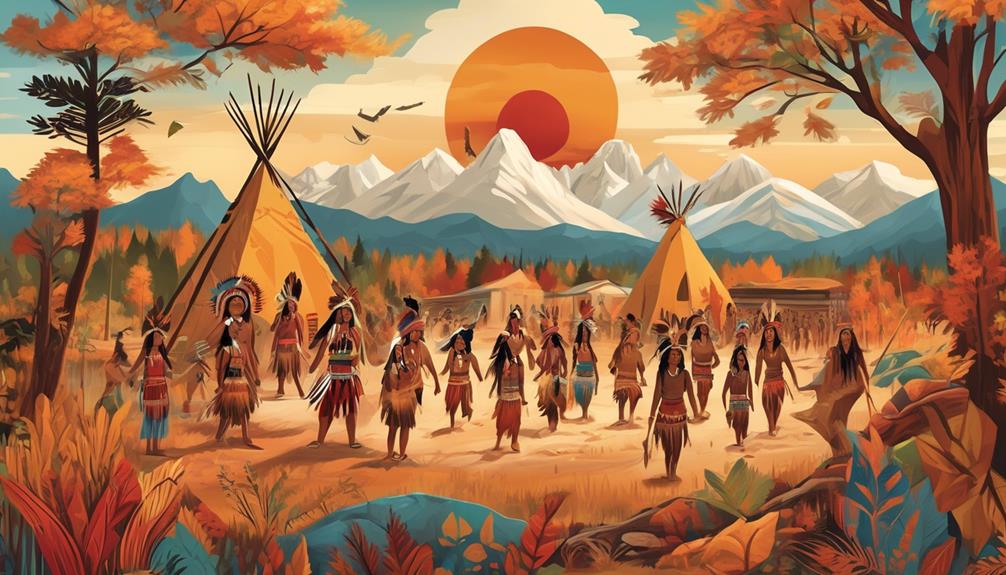
Many states across the United States have officially recognized Indigenous Peoples Day as a holiday, replacing or coexisting with Columbus Day. This shift holds immense cultural significance as it acknowledges and celebrates the rich heritage, resilience, and contributions of indigenous communities. It offers an opportunity to educate the public about the historical and ongoing impact of colonialism on indigenous peoples. Recognizing Indigenous Peoples Day also reflects a shift in political implications, signaling a commitment to reconciliation and a more inclusive narrative of American history.
The states that have embraced Indigenous Peoples Day have taken a significant step towards honoring the diverse cultures and traditions of Native American communities. This acknowledgment serves as a platform for raising awareness about the challenges indigenous peoples have faced and continue to confront. Moreover, it signifies a departure from the previously glorified narrative of Columbus and the colonial era, recognizing the need for a more accurate and respectful representation of history. The adoption of Indigenous Peoples Day by various states underscores a growing movement towards cultural sensitivity and historical truth-telling.
Efforts to Replace Columbus Day
Efforts to replace Columbus Day with Indigenous Peoples Day have sparked discussions about the historical significance of these holidays and the cultural representations they embody. The Columbus Day controversy revolves around recognizing the cultural significance of Indigenous Peoples Day as an alternative to celebrating the arrival of Christopher Columbus in the Americas. This shift represents a fundamental reevaluation of historical narratives and a step towards acknowledging the complex and often painful history of indigenous peoples.
| Columbus Day Controversy | Cultural Recognition |
|---|---|
| Critique of Columbus as a figure of celebration | Acknowledgment of indigenous contributions |
| Reevaluation of historical narratives | Representation of diverse cultural experiences |
| Recognition of the impact of colonialism | Celebration of indigenous resilience and heritage |
The movement to replace Columbus Day is not just about changing a name on the calendar but also about promoting cultural recognition and inclusivity. By honoring Indigenous Peoples Day, we acknowledge the resilience and contributions of indigenous communities, fostering a more inclusive and historically accurate representation of America's cultural tapestry.
Significance of Observing Indigenous Peoples Day
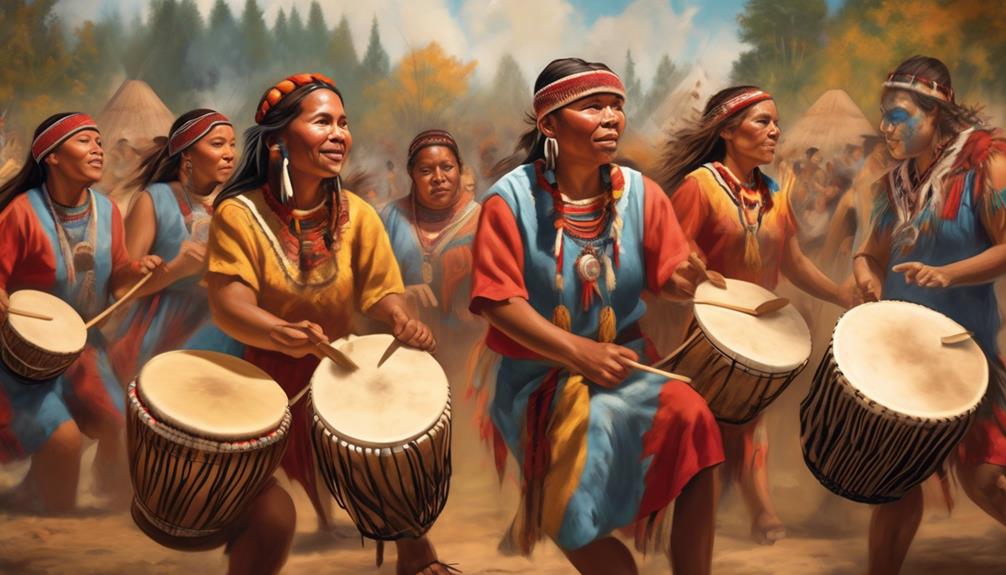
Observing Indigenous Peoples Day holds significant cultural and historical importance, shedding light on the resilience and contributions of indigenous communities in our nation's narrative. The shift from Columbus Day to Indigenous Peoples Day represents a crucial step in cultural recognition and social justice. By honoring indigenous peoples, we acknowledge the profound impact of colonialism and promote healing and reconciliation. This observance not only educates the public about the rich heritage of indigenous cultures but also challenges historical inaccuracies and stereotypes. It provides an opportunity to elevate indigenous voices, fostering a more inclusive and equitable society.
Furthermore, the educational impact of observing Indigenous Peoples Day is profound. It allows for a more accurate and comprehensive understanding of our nation's history, amplifying the voices of those often marginalized. By incorporating indigenous perspectives into the curriculum, we empower communities and promote a deeper sense of belonging and understanding. This shift in focus also encourages community empowerment, fostering a sense of pride and unity among indigenous populations while promoting cross-cultural appreciation and understanding.
Ultimately, by recognizing Indigenous Peoples Day, we take a crucial step towards dismantling systemic injustices and embracing the diversity that enriches our national identity.
Future of Indigenous Peoples Day
The evolution of Indigenous Peoples Day signifies a monumental shift in cultural recognition and social justice, paving the way for a reclamation of indigenous narratives and a more inclusive national identity.
As we look towards the future of Indigenous Peoples Day, several key aspects come into focus:
- Cultural representation: The future of Indigenous Peoples Day relies on continued efforts to elevate and celebrate indigenous cultures. This includes promoting traditional art, music, and literature, and ensuring that indigenous voices are prominently featured in national conversations.
- Community empowerment: The ongoing success of Indigenous Peoples Day depends on the empowerment of indigenous communities. This involves creating platforms for indigenous leaders to advocate for their rights and needs, as well as providing resources for economic and social development within these communities.
- Education reform: The future of Indigenous Peoples Day must involve comprehensive education reform. This reform should incorporate accurate and respectful portrayals of indigenous history and culture within school curriculums, ensuring that future generations have a deeper understanding of the contributions and struggles of indigenous peoples.
- Identity recognition: Going forward, it's crucial to continue efforts to honor and recognize the unique identities of indigenous peoples. This includes supporting initiatives that preserve indigenous languages, traditions, and customs, as well as actively challenging stereotypes and misconceptions that have historically marginalized indigenous communities.
Frequently Asked Questions
What Are Some Common Misconceptions About the History and Significance of Indigenous Peoples Day?
Common misconceptions about Indigenous Peoples Day stem from a misunderstood history and cultural significance. Many overlook the holiday's roots in Indigenous rights and community initiatives.
It's essential to acknowledge the historical context and the impact of colonization on Indigenous communities. Understanding these complexities is crucial for appreciating the true significance of Indigenous Peoples Day and supporting efforts to promote awareness and social justice for Indigenous peoples.
How Do Indigenous Communities in Non-Recognized States Celebrate Indigenous Peoples Day?
In non-recognized states, indigenous communities celebrate Indigenous Peoples Day with vibrant community gatherings, captivating cultural performances, and showcases of Indigenous art.
Traditional food takes center stage, sharing the rich culinary heritage.
These celebrations serve as a powerful testament to our resilience and the enduring spirit of our people.
They provide a platform for reclaiming our narratives and fostering unity, ensuring our traditions and contributions are honored and celebrated.
Are There Any Ongoing Legal or Political Efforts to Make Indigenous Peoples Day a Federal Holiday?
Efforts to make Indigenous Peoples Day a federal holiday have gained momentum. Legal recognition and political advocacy are driving this initiative.
The movement seeks to honor Indigenous communities' contributions and recognize their historical and ongoing struggles. It also aims to promote cultural awareness and understanding.
The push for federal recognition of Indigenous Peoples Day reflects a growing acknowledgment of the need to address historical injustices and celebrate Indigenous heritage on a national level.
What Are Some Examples of Grassroots Initiatives to Educate the Public About the Importance of Indigenous Peoples Day?
Grassroots initiatives play a vital role in public education about Indigenous Peoples Day. These efforts include community-led events, educational workshops, and advocacy campaigns. By engaging with local communities, these initiatives foster a deeper understanding of Indigenous culture and history.
This grassroots movement aims to challenge the lack of federal recognition of Indigenous Peoples Day and promote meaningful celebration practices. These efforts contribute to a broader societal acknowledgement of the importance of Indigenous Peoples Day.
How Do Indigenous Leaders and Activists Envision the Future of Indigenous Peoples Day Celebrations and Recognition?
In envisioning the future celebrations of Indigenous Peoples Day, Indigenous activism plays a pivotal role. The focus is on reclaiming and preserving cultural traditions, challenging colonial narratives, and advocating for broader recognition of indigenous sovereignty.
This vision aims to center indigenous voices and experiences, fostering deeper understanding and respect for indigenous communities. It seeks to cultivate a future where indigenous peoples' contributions and resilience are celebrated and honored, laying the foundation for a more inclusive and equitable society.
Conclusion
In conclusion, it's ironic that while some states have recognized Indigenous Peoples Day, many others still celebrate Columbus Day.
It's time to shift the focus to honoring the rich and diverse cultures of indigenous peoples, rather than celebrating a historical figure with a controversial legacy.
As we continue to push for change and recognition, let's remember the importance of acknowledging and celebrating the contributions of indigenous communities to our shared history.
Mary is a passionate writer who brings creativity and a fresh perspective to our team. Her words have the power to captivate and inspire, making her an essential contributor to our content. Mary’s commitment to storytelling and dedication to promoting Indigenous culture ensures that her work touches the hearts of our readers. We’re fortunate to have her as part of our team.
